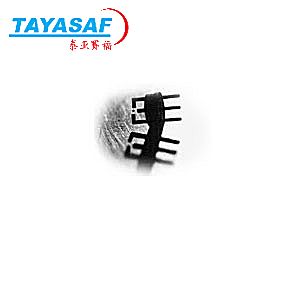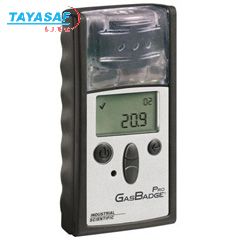

SP-11可燃气体检测仪
| 订货号: | MM-41467-00 |
| 产地: | 日本 |
| 品牌: | |
| 开发编号: | N |
| 市场价: | ¥ |
| *此产品根据配置不同价格不同 |
| *此价格为参考价格,具体价格以订单合同为准 |
- 我在现场:
- 产品视频:

- 产品描述
- 技术参数
- 技术文档
- 相关产品
- 明细价格
- 购买流程
产品描述:
The SP-11 is a tin di-oxide semiconductor gas sensor which has a high sensitivity to methane, propane, butane
and other hydrocarbons with reduced sensitivity to alcohol. The SP-11 is suitable forgeneral hydrocarbon gas detection.
Structure
Gas sensitive semiconductor material is formed on the alumina substrate on which the gold electrodes are printed. A thick film heater of ruthenium oxide is printed on the reverse of the substrate and placed in the plastic
Operating conditions
Fig 2 shows the standard operating circuit for this model. The change of the sensor resistance (RS) is obtained as the change of the output voltage across the fixed or variable resistor (RL). In order to obtain the best performance and specified characteristics, the values of the heater voltage (VH) circuit voltage (VC) and load resistance (RL)
must be within the range of values given in the standard operating conditions shown in the Specification table on the next page. Sensitivity characteristics Fig 3 shows the sensitivitycharacteristics curves of the SP-11 (typical data). Sensitivity characteristics of the FIS gas sensors are expressed by the resistance and gas concentration.
The sensor resistance decreases with an increase of gas concentration based on a logarithmic function.
The sensitivity characteristics of the SP-11 is specified by the following parameters.
• Sensor resistance level: at methane 3000 ppm
• Sensor resistance change ratio: between methane 1000 and 3000 ppm
See the specification table on thenext page for further details. The SP-11 is a tin di-oxide semiconductor gas sensor which has a high sensitivity to methane, propane, butane and other hydrocarbons with reduced sensitivity to alcohol. The SP-11 is suitable for general hydrocarbon gas detection.
Structure
Gas sensitive semiconductor material is formed on the alumina substrate on which the gold electrodes are printed. A thick film heater of ruthenium oxide is printed on the reverse of the substrate and placed in the plastic housing (Fig 1). Operating conditions
Fig 2 shows the standard operating
circuit for this model. The change of the sensor resistance (RS) is output voltage across the fixed or variable resistor (RL). In order to obtain the best performance and specified characteristics, the values of the heater voltage (VH) circuit voltage (VC) and load resistance (RL) must be within the range of values given in the standard operating conditions shown in the Specification table on the next page. Sensitivity characteristics Fig 3 shows the sensitivity characteristics curves of the SP-11 (typical data). Sensitivity characteristics of the FIS gas sensors are expressed by the relationship between the sensor resistance and gas concentration. The sensor resistance decreases with an increase of gas concentration based on a logarithmic function. The sensitivity characteristics of the SP-11 is specified by the following parameters. • Sensor resistance level: at methane 3000 ppm
•Sensor resistance change ratio: between methane 1000 and 3000 ppm See the specification table on the next page for further details.
技术参数:

泰亚赛福作为众多知名品牌的合作伙伴,优惠的价格+完善的售后服务体系向您提供产品。font>

泰亚赛福作为众多知名品牌的合作伙伴,优惠的价格+完善的售后服务体系向您提供产品。font>
技术文档:

泰亚赛福作为众多知名品牌的合作伙伴,优惠的价格+完善的售后服务体系向您提供产品。font>
- 在线浏览:
- 文档下载:

泰亚赛福作为众多知名品牌的合作伙伴,优惠的价格+完善的售后服务体系向您提供产品。font>
相关产品:

泰亚赛福作为众多知名品牌的合作伙伴,优惠的价格+完善的售后服务体系向您提供产品。font>

泰亚赛福作为众多知名品牌的合作伙伴,优惠的价格+完善的售后服务体系向您提供产品。font>
明细价格:

泰亚赛福作为众多知名品牌的合作伙伴,优惠的价格+完善的售后服务体系向您提供产品。font>
| 定货号 | 产品名称 | 规格配置 / 简介 | 市场价/(会员价) |
|---|---|---|---|
| MM-41467-00 | SP-11可燃气体检测仪 | /() |

泰亚赛福作为众多知名品牌的合作伙伴,优惠的价格+完善的售后服务体系向您提供产品。font>
购买流程:

泰亚赛福作为众多知名品牌的合作伙伴,优惠的价格+完善的售后服务体系向您提供产品。font>
①购买产品:点击“生成订单”→填写产品数量、联系方式并提交→会员顾问订单处理→合同签订。
②咨询产品:请联系会员顾问或致电会员客服电话。
③如果您还不是我们的会员,请先注册。
④最小起订数量:1
注意:本产品唯一个人现金委托收款人,如汇入其它个人账户本公司不承担任何责任
维护担当:
上线时间:
投诉电话:13801126385 13911302309
②咨询产品:请联系会员顾问或致电会员客服电话。
③如果您还不是我们的会员,请先注册。
④最小起订数量:1
注意:本产品唯一个人现金委托收款人,如汇入其它个人账户本公司不承担任何责任
维护担当:
上线时间:
投诉电话:13801126385 13911302309
联系方式
电话北京:400-000-1836 分机 或拨0转总机
上海:021-54248686 分机840 / 211 或拨0转总机
上海:021-54248686 分机840 / 211 或拨0转总机
传真北京:010-84852750/84854139
上海:021-64418200
上海:021-64418200

泰亚赛福作为众多知名品牌的合作伙伴,优惠的价格+完善的售后服务体系向您提供产品。font>
您最近浏览的商品














 日本FIS
日本FIS
